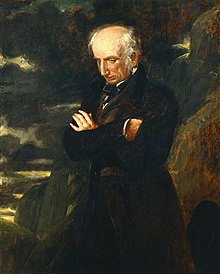07.13

On July 13, 1798, while on a walking tour, William Wordsworth and his sister Dorothy visit a ruined church called Tintern Abbey. The ruins inspired Wordsworth’s poem “Tintern Abbey,” in which Wordsworth articulated some of the fundamental themes of Romantic poetry, including the restorative power of nature. The poem appeared in Lyrical Ballads, with a Few Other Poems in 1798, which Wordsworth collaborated on with his friend and fellow poet Samuel Taylor Coleridge. The book, which also included Coleridge’s Rime of the Ancient Mariner, sold out within two years. The book’s second edition included an important preface that articulated the Romantic manifesto. Wordsworth was born near England’s Lake District in 1770. He lost his mother when he was eight, and his father died five years later. Wordsworth attended Cambridge, and then traveled in Europe, taking long walking tours with friends through the mountains. During his 20s, Wordsworth lived with his sister Dorothy and became close friends with Coleridge. In 1802, after years of living on a modest income, Wordsworth came into a long-delayed inheritance from his father and was able to live comfortably with his sister. The poet’s stature grew steadily, although most of his major work was written by 1807. In 1843, he was named poet laureate of England, and he died in 1850, at the age of 80.











